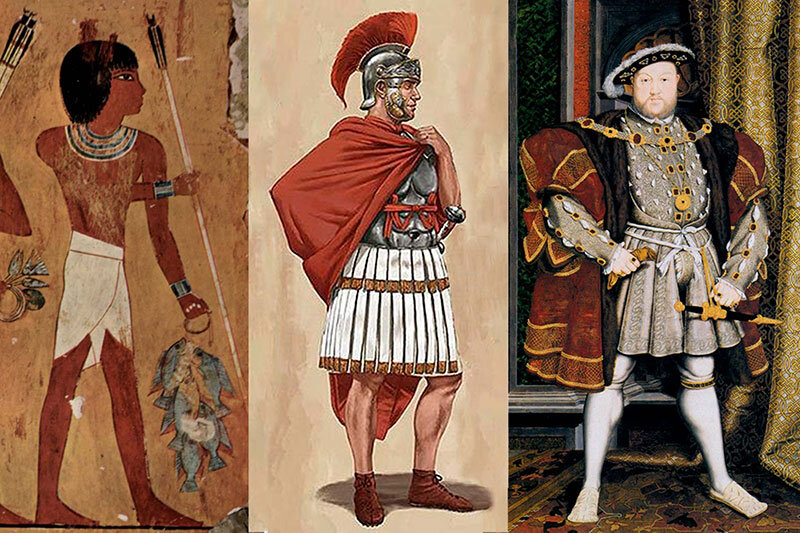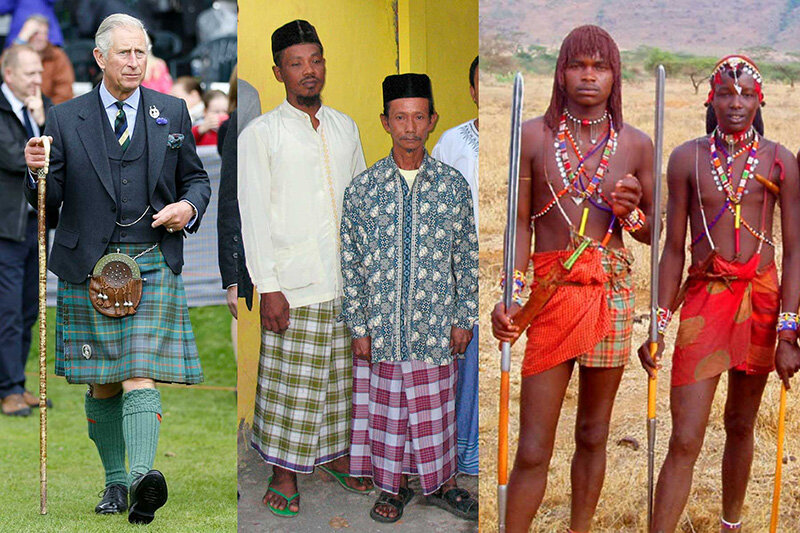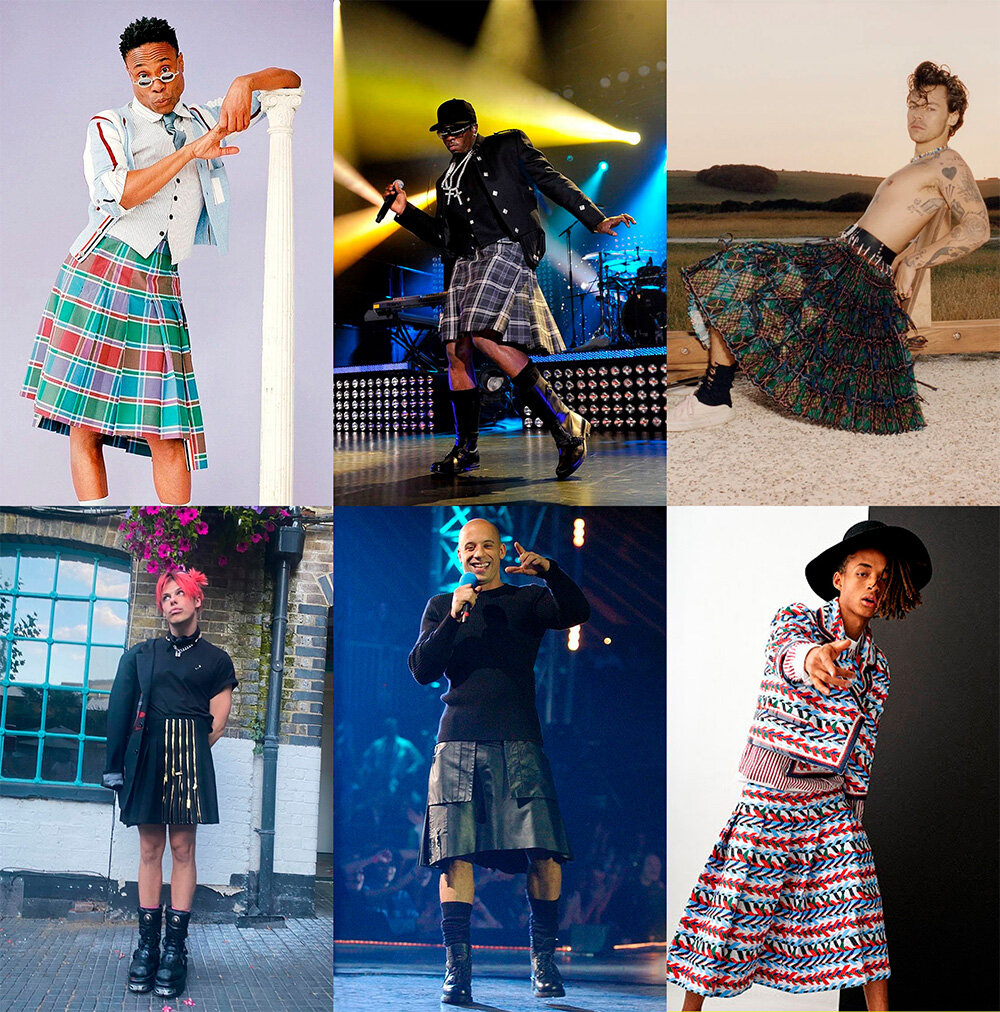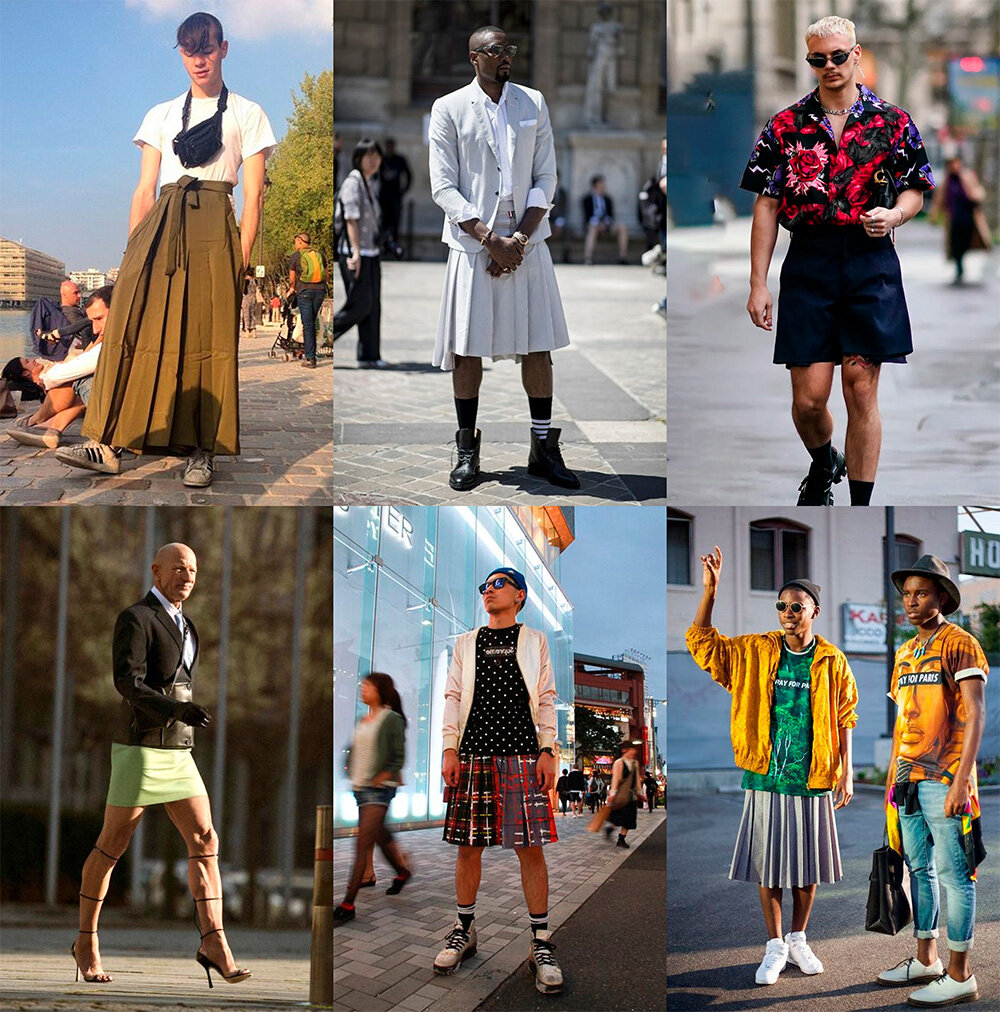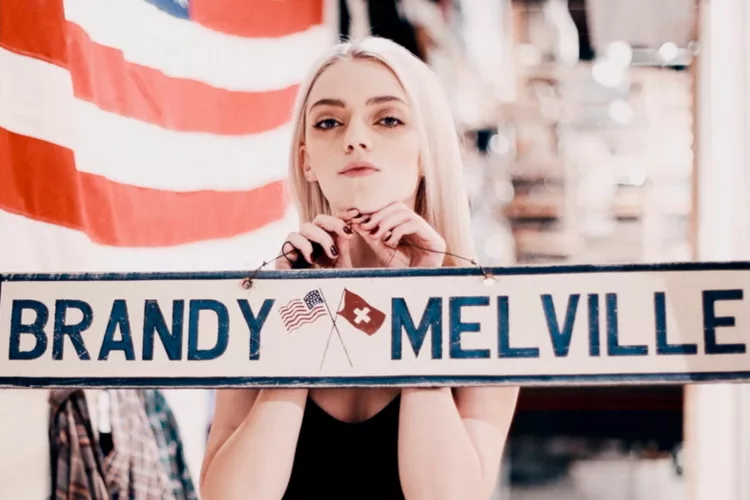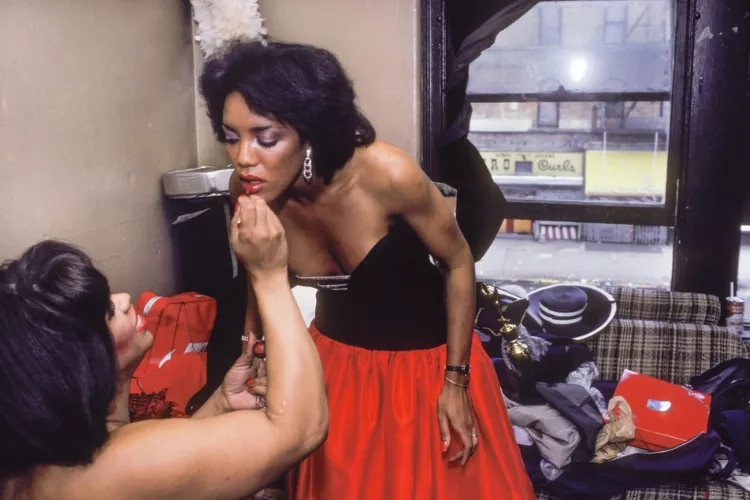If we’re all into gender neutrality why is men wearing skirts still not a normal thing? Beyond “gender neutral” it’s time to degender fashion.
A few weeks ago, I read outrageous news: A Spanish student was expelled from school for wearing a skirt to class. Not only that but he was forced to see a psychologist! It seemed pure irony considering it happened during pride month. But on the bright side, in protest and solidarity, the teachers showed up to class in skirts regardless of their gender.
This news reminded me of the time I surveyed men about skirts – would they wear a skirt they definitively liked and that fit well? 76% voted no. But what if men’s skirts were in fashion? Still, 58% wouldn’t use them (even liking them), while 17% would feel more comfortable and 25% voted they would use them even if it wasn’t a trend. That got me thinking… why if I offered them (hypothetically) a garment they 100% liked (fit, design, comfort, everything), did they still say they wouldn’t wear it?
Why aren’t skirts worn by men? Preferences aside, we should question the heteronormativity imposed on our society, in this case, by fashion. The fashion industry had to come up with the concept “Androgynous” to refer to fashion whose clothes can’t be distinguished among genders, or “unisex” for suitable designs accepted for both sexes. But how can a garment have gender? (And by this, we don’t mean to ignore the established inclinations towards what is feminine or masculine). At what moment did men stop having the freedom to wear a dress or a skirt? Isn’t is just a garment?
History
Ancient Egypt; Greek/Roman warrior; Henry the 8th.
Skirts have been worn by men since Ancient Egypt! In Ancient Greece and Rome skirts, representing youth and virility, were worn exclusively by warriors, evoking a form of hypermasculinity. On the other hand, regular men and women wore robes.
In the Middle Age, people kept on using robes. And during the Renaissance, iconic figures such as Henry the 8th, wore velvet skirts with satin and gold cloth linings, often encrusted with glittering gems all to denote royalty’s wealth and power.
Kilt (Scotland) / Sarong (Vietnam) / Kekois (Africa)
And since we’re momentarily in the British Isles, we certainly can’t leave aside the “kjalta” in Norse, means fold of a gathered skirt), in other words, the Scottish Kilt. This tartan skirt from the XVIII century could be worn only by men and is still the modern full-dress kit of the Scottish regiments of the British Army. Indeed, there are still a wide variety of traditional male skirt-like costumes and dresses from a multitude of cultures spanning the globe.
Fashion today
Let’s now move forward to the present time. The fact that trousers are worn by any gender is a social construction. A woman wearing pants 300 years ago would have been an aberration! In the ’20s (just 100 years ago) the first women in “male” suits appeared and they weren’t well-received at all… Still, women in trousers are de rigueur. If women could adapt to suits, what’s stopping men from skirts?
This is intrinsically connected with the connotation of genders. Men have always been associated with power, so when a woman adopted these garments, it was seen as a message of positive empowerment. But when the roles are reversed, associating a man with fragility and sensitivity is often interpreted as a sign of weakness.
In the ‘80s, with the birth of avant-garde fashion, some prestigious designers such as Jean-Paul Gaultier, Kenzo Takada, Giorgio Armani, Rei Kawakubo, John Galliano and Yohji Yamamoto started to promote the idea of men skirts in their runways.
Celebs in their Skirts
Top row L-R Billy Porter, P Diddy/Sean Combs, Harry Styles. Bottom Row L-R YUNGBLUD, Vin Diesel, Jaden Smith
In the 90s, with the explosion of alternative music, many artists adopted the use of skirts in their performances. Since then, many celebrities were encouraged to incorporate skirts into their closets. Famous characters like Kanye West continue to dictate the trend, among new figures like Harry Styles and others.
Men’s Skirts by Design
L-R Givenchy, Marc Jacobs in his own work, Vivienne Westwood L-R Maison Margiela, Louis Vuitton, Thom Browne
Nowadays, Thom Browne is one of the biggest references, since he made elegant office men’s skirts the hallmark of the brand. Marc Jacobs has been a huge influencer by wearing skirts on his own. Brands such as Gucci, Louis Vuitton, Maison Margiela (and more) are contributing to the presence of this garment in the market.
Street Style Trend Setters
Currently, men wearing skirts is still considered an act of rebellion against the parameters established by society. But can we put aside the tyranny of trousers and begin to democratize clothing? The assigned value of gender in clothes is merely a convention that mutates along with time and cultures. It’s about time to DEGENDER FASHION!
There’s no doubt wearing a skirt makes a statement. It says you’re a disruptive person who doesn’t care about stereotypes, without prejudices, that breaks with the established norms advocating change. Is there anything more attractive than dressing up confidently?
We are living the gender revolution. This paradigm shift comes hand in hand with an open mindset and a more inclusive philosophy. It’s the perfect time for men to open up to a new horizon, incorporating fashion garments that were exclusively intended for women.
Here at No Kill, we believe in self-expression and diversity! And we motivate you to feel free to wear what you want, to try new things and fight the norm. We believe in a new era where skirts and dresses could be normalized for men, where men are confident enough to experiment, and where designers are challenged to innovate these garments’ designs and offer all-type of options for everyone to wear.
–Nazarena Correia
Related Articles
- 8 Reasons Harris Reed is a Fashion Rockstar
- Transgender Fashion Inspiration | 5 Trans People With Killer Style
- NYFW -APotts, Chelsea Grays, Ka Wa Key + Maison Atia
- LFW -N Palmer, IA London, EIRINN HAYHOW, Lupe Gajardo + Art School

